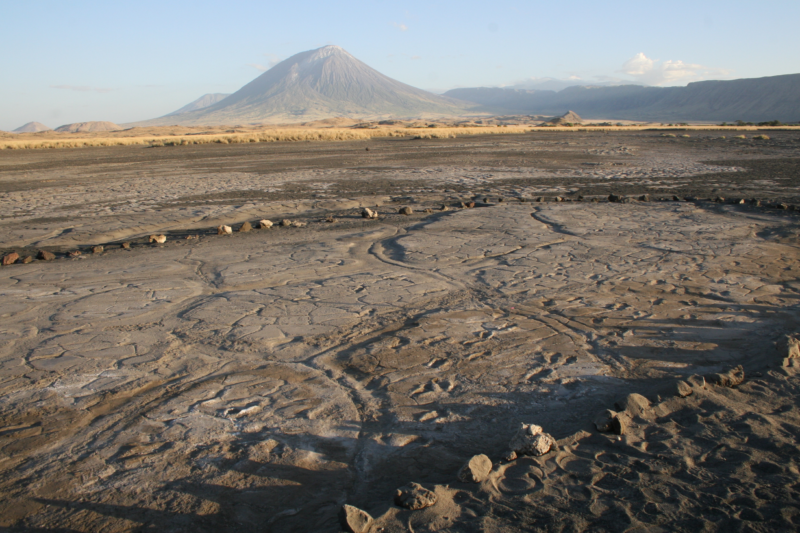
Enlarge (credit: Hatala et al. 2020)
Near the end of the last glaciation, a group of people walked barefoot along the shores of Lake Natron. They walked side by side, their paths never crossing each other as they headed southwest. It’s tempting to wonder what they might have thought if they’d known that the soft volcanic ash beneath their feet would preserve their tracks for thousands of years.
Bones can tell you things about how a person lived their life, but footprints are a snapshot of action in progress. It’s one thing to know that an ancient person spent a lot of time throwing things or carrying things, and it’s something much more immediate and personal to see exactly where that person walked, climbed a slope, or crawled into a muddy cave. Footprints, in some ways, are more startlingly intimate links to the past than bones. And at Engare Sero, just south of Tanzania’s Lake Natron, 408 footprints reveal how an ancient group of hunter-gatherers foraged.
The other half of the hunter-gatherer economy
Today, the footprints offer a look at something that’s often missing from the archaeological record: the work done by women and the gathering half of the hunter-gatherer economy. Based on the size, depth, and proportions of the prints, it looks likely that 14 of the people walking by the ancient lakeshore were women. Two of the others were probably adult men, and the last was probably a young man.
Read 10 remaining paragraphs | Comments
Source: Ars Technica – Footprints capture a lakeside stroll by a group of ancient hunter-gatherers
